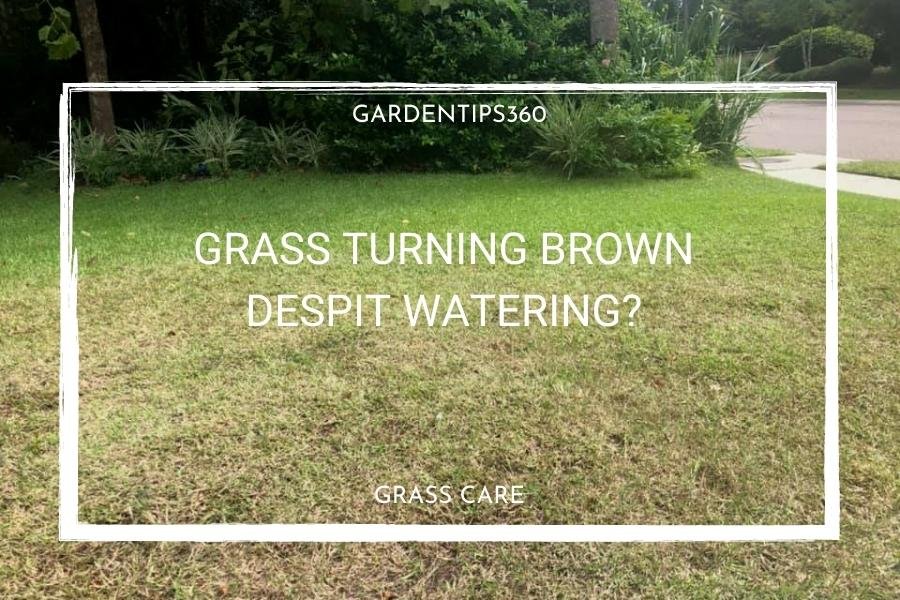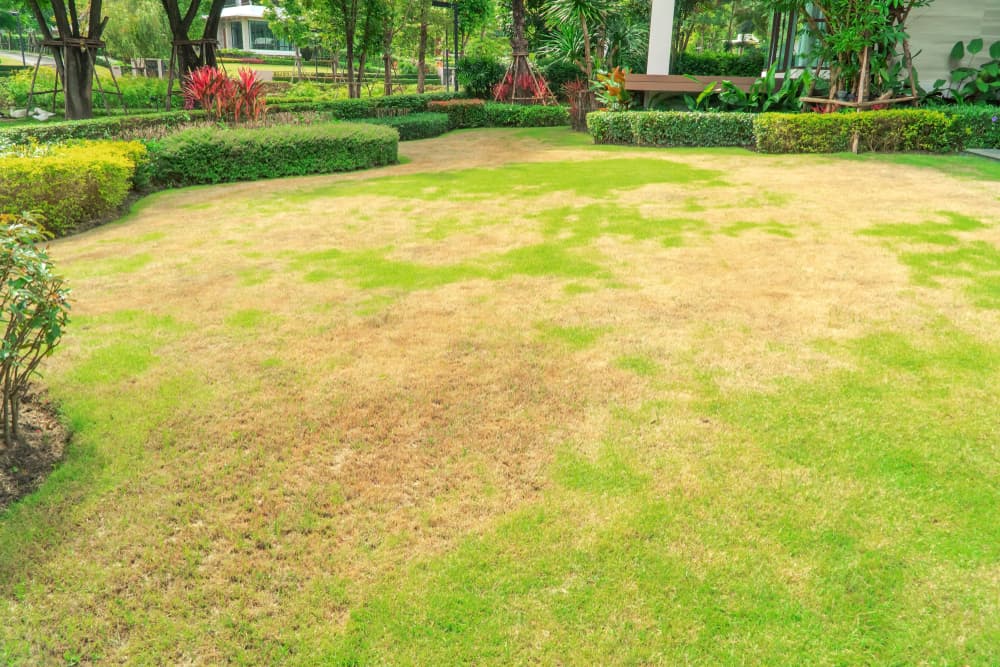

Lawn turning brown despite watering? This seemingly simple issue can hide complex problems within your lawn. If your typically green lawn is exhibiting patches of brown, regardless of how diligently you water, it’s time to investigate the possible reasons behind this discoloration. This comprehensive guide will delve into the numerous reasons why your lawn might be turning brown despite your efforts, from improper watering techniques to lurking pests and diseases. We’ll also provide practical, actionable solutions to restore the vibrancy of your lawn. The guide will explore everything from identifying the underlying cause to implementing effective solutions. We’ll explore different scenarios, from soil conditions to potential pest infestations.
Insufficient Watering Techniques
Understanding the Importance of Deep Watering
Many homeowners believe that frequent, shallow watering is sufficient, but this often leads to shallow root systems which are unable to fully absorb the water needed for the lawn to thrive. Your grass needs consistent deep watering, promoting deep roots that can better access moisture deep in the soil. Think of it like giving your lawn a deep drink rather than several small sips. This crucial step strengthens the grass’s ability to endure dry periods and resist damage. Understanding the ideal watering schedule for your specific climate and soil type is crucial. Consider the time of day, the amount of sunlight exposure, and the type of grass you have. Deep watering typically involves longer durations at a lower rate to encourage deep root penetration and moisture retention. Additionally, water early in the morning to reduce evaporation.
Recognizing the Signs of Overwatering and Underwaterings
Overwatering is just as detrimental as underwatering. Excess water can lead to root rot, affecting the grass’s ability to absorb nutrients and ultimately resulting in brown patches. Signs of overwatering include soggy soil that doesn’t drain properly and excessively wet patches on your lawn. Underwatering, conversely, will result in wilting and browning and poor soil moisture. Understanding the difference is critical to addressing the problem. For example, a proper moisture meter can effectively measure the water content of the soil, enabling you to fine-tune your watering schedule.
Soil Composition and Drainage Issues
Examining Soil Compaction
Soil compaction can hinder the movement of water and air, making it difficult for grass roots to access the moisture they require. Compacted soil restricts water penetration, leading to areas of your lawn receiving inadequate moisture. This issue can be exacerbated by heavy foot traffic or equipment use. Identifying the degree of compaction in your lawn is essential in determining the appropriate solution. You may be able to resolve the issue by aerating your lawn, loosening the soil and allowing water to better penetrate. In some cases, you may even need to improve the soil’s drainage, like installing a drainage system to remove excess water.
Determining Soil pH Balance
The pH level of your soil significantly impacts its ability to absorb and retain water. An imbalanced pH can inhibit the uptake of essential nutrients, leading to stunted growth and eventual browning. Testing your soil pH can offer insights into whether soil conditions are optimal. Many home improvement centers or agricultural stores can help to test your soil pH.
Pest and Disease Problems
Identifying Potential Pests
Various insects and pests can cause significant damage to your lawn, resulting in brown patches and overall decline in its health. Common culprits include grubs, sod webworms, and chinch bugs. These pests often feed on the grass roots, depriving them of essential nutrients and moisture. Regular inspection is critical in detecting infestations early. Early detection and appropriate treatment can prevent a lawn-wide infestation and damage.
Diagnosing Root Diseases
Root diseases, such as fungal diseases, can cause extensive damage to the roots, leading to brown or yellow patches within your lawn. Root diseases can significantly reduce the ability of the grass to absorb and retain moisture. Identifying and treating root diseases promptly is vital to prevent further damage to your lawn.
Inadequate Fertilization
Understanding the Role of Nutrients
Proper fertilization is critical to providing your lawn with the necessary nutrients to maintain its health and resilience. Lack of essential nutrients can lead to yellowing or browning and limit the grass’s ability to recover from stress. Understanding the correct fertilizer application rate and schedule is crucial. The choice of fertilizer should consider the type of grass and the specific nutrient needs of your lawn.
Assessing the Need for Specific Nutrient Supplements
Your grass requires a combination of nutrients, including nitrogen, phosphorus, and potassium, to thrive. Identifying nutrient deficiencies and supplementing accordingly can prevent issues such as lawn browning and promote lush growth. Soil testing can accurately determine which nutrients need supplementing.
Seasonal Changes and Environmental Factors
Adjusting Watering Habits During Different Seasons
Seasonal shifts, such as changes in weather patterns or the amount of sunlight exposure, can also affect your lawn’s moisture levels, leading to problems such as browning. Proper adjustment to seasonal watering requirements can prevent significant lawn issues.
Understanding the Impact of Extreme Weather
Periods of prolonged drought or excessive rainfall can negatively affect your lawn, leading to discoloration or damage. Weather-related factors are important to keep in mind during your lawn maintenance schedule.
In conclusion, your lawn turning brown despite watering could stem from several underlying issues, from inadequate watering techniques to hidden pest infestations. Addressing the root cause through proper diagnosis and tailored solutions is key to restoring a vibrant lawn. To get started, carefully assess your lawn’s condition. Look for specific signs like patches of brown grass, consistent dryness, or presence of pests. Contact a local landscaping professional for a professional consultation or further guidance if you are unsure about the next steps. They can provide personalized advice and recommendations for your specific lawn needs.